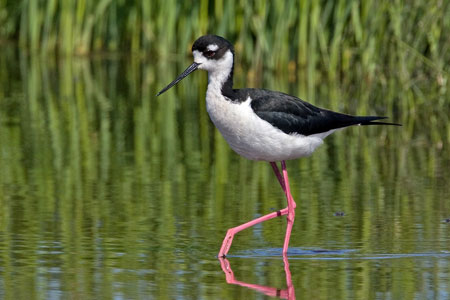
Field Preparation
Water Module »
|
Physical Character of Lakes

- No two lakes are alike. They may differ in size, depth, number and size of inflowing and outflowing streams, and shoreline configuration. These physical characteristics influence:
- the species of fish,
- the likelihood of plant or algae growth,
- the temperature and quality of the water.
Lake Depth
In a deep lake,
- water near the surface may be very different physically, chemically, and biologically from water near the bottom.
The top portion of the lake is mixed by the wind and warmed by the sun. Because of the available light and warmer temperatures, many organisms live there. The more organisms that are photosynthesizing, breathing, eating and growing, the higher the growth rate or productivity. The bottom portion of a deep lake receives little or no light. The water is colder; it is not mixed by wind; and decay of dead organic matter, called decomposition, is the main physical, biological, and chemical activity.
A shallow lake
- is more likely to be homogeneous (the same from top to bottom). The water is well mixed by wind, and physical characteristics such as temperature and oxygen vary little with depth. Because sunlight reaches all the way to the lake bottom, photosynthesis and growth occur throughout the water column. It also is likely that a larger portion of the water in a shallow lake is influenced by sunlight, and that photosynthesis and growth are proportionately higher.
Lake Size
Lake size affects a number of important relationships:
- the ratio of lake surface area to miles of shoreline,
- the percentage of the total water volume that is influenced by sunlight, and
- the ratio of the size of the watershed to size of the lake.
A small lake with a greater ratio of shoreline to water volume may be more susceptible to damage from shoreline or watershed activity.
Inflows and Outflows
The number of streams flowing in and out of a lake determine how long it takes for a drop of water entering a lake to leave it - a process called flushing. Some lakes flush in days while others take years. In terms of pollution, the more rapidly the lake flushes the better because pollutants are flushed from the lake before they can cause too much damage. A more rapidly flushing lake also may respond sooner to pollution control activities in the watershed.
Shoreline Configuration
Another important lake characteristic is the shape of the shoreline. Shallow bays and inlets tend to be warmer and more productive than other parts of a lake. In a lake strongly influenced by shallow bays or inlets, water quality is likely to be greatly affected by location, and multiple sampling stations probably will be necessary.
|
|



